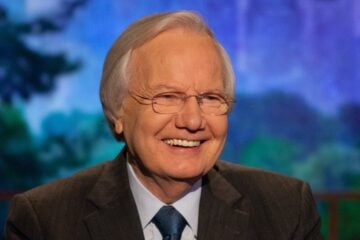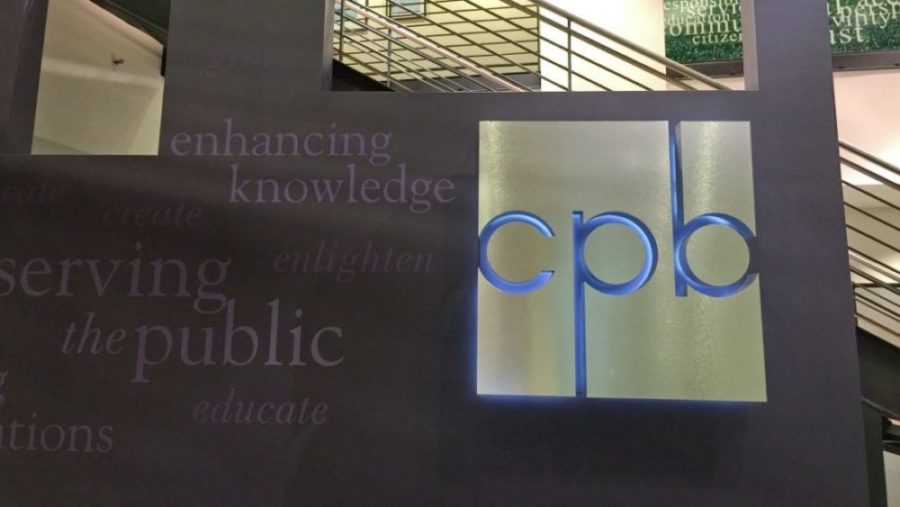Radio stations go to new places to court younger listeners

Renee Dominguez / KUT News
Two attendees talk at the Dec. 10 mixer hosted by KUT/KUTX in Austin.
To reach younger listeners in ways that build loyalty and financial support, public radio stations are hosting events that offer new ways for people to get to know each other — and the hosts who help them start the day or the weekend.
The goal is to connect with millennial listeners, a generational cohort that includes adults who are pushing 30 and enjoying the single life and parents closer to 40. Stations are hosting dating mixers, meetups at breweries and family events for kids to learn and play. Experiences that are authentic to each station’s local community and create a sense of belonging are the name of the game.
The task of engaging millennials — a generation that Pew Research Center defines as born between 1981 and 1996 — is essential for these stations, including Boise State Public Radio.
“We’re coming up on our 50th anniversary in just a couple years here,” said BSPR Development Director Kristin Jackson. “Without new donors, we’re not going to see year 75 or year 100. We have to bring in new donors if we want to survive. We just do.”
Millennials, often described as “digital natives,” are the bedrock for public radio’s audience and donor base of the future, according to Eric Nuzum, co-founder of audio production and media consulting firm Magnificent Noise. Many more stations need to start making an effort to reach them.
“They will be the listening foundation,” Nuzum said. “They will be the financial foundation.”
This demographic cohort was the focus of qualitative research looking at their perspectives on public radio’s core values. Nuzum analyzed interviews conducted for the Giving Agency’s 2023 Millennial Listener Insight Study.
Boise State was one of two stations whose millennial-generation listeners answered questions about how they perceived public radio’s core values.
‘Fish where the fish are’
Boise State’s efforts to reach these younger listeners began before the coronavirus pandemic, when the network launched “Another Round” events where people meet and mingle with the network’s staff at local breweries.
“Here in Idaho, our brewery scene is huge,” Jackson said. “That’s where the millennials are.”
Elsewhere, WTJU in Charlottesville, Va., is getting millennial parents in its doors with a monthly family radio day. The events, piloted this spring, are now scheduled through April, said GM Nathan Moore.
“Millennials have little kids now,” Moore said.

The event includes story time and local musicians leading an improvised music-making activity.
Each child also experiences what it’s like to speak into a mic and “see sound” in recorded waveforms. In an interview with their parents, each records their name and favorite color, Moore said. The station also records the children singing “Twinkle, Twinkle, Little Star.” The recordings are edited and turned into a short show for each participating family, who receive an audio file via email.
In a different project, WTJU has published five zines about the Charlottesville music scene, Moore said. The series started in April 2023.
The station has sold dozens of editions at the Charlotteville Zine Fest, a community-building project that includes artist-led workshops and an October festival where zine makers share their work.
“That is mostly people in their 20s and 30s,” Moore said.
WTJU has also given hundreds of the zines away to University of Virginia students, he added.
Nuzum advises stations not to worry about replicating what others are doing to engage millennials. Instead, find out where these people are gathering organically in the community.
“Fish where the fish are,” Nuzum said.
Moore, meanwhile, sees FM radio broadcasts as just one way to accomplish public radio’s work.
“For me, what we’re here to do is to serve people’s needs,” he said. “If we take a sort of more expansive version of what our purpose is … what we’re addressing is really the need for connection, belonging and to be heard and to be in relationship with other people, to fight loneliness, to help people experience beauty.”
Introducing a dating mixer
Nuzum has another suggestion for reaching this audience: “Just find the millennials on your staff and let them tell you what to do.”
It’s an approach KUT and KUTX in Austin, Texas, have already taken.
Nearly 200 people attended a Dec. 10 mixer hosted by the stations for public radio fans looking for a romantic connection or friendship, according to spokesperson Erin Geisler.
Two millennial digital editors came up with the idea after a donor commented during a membership drive that they name-drop KUT in their dating profile, according to Wade Lee, assistant GM for strategy, engagement and development.

The station had already tested these waters. In February, KUT hosted a panel on dating that featured Zach Shallcross and Kaity Biggar, an Austin couple who got engaged on The Bachelor.
“It’s targeting a younger audience. If older folks come, that’s great, too,” Lee said. “We want to be that place … that connects the entire community.”
Music station KUTX attracts young families with its Rock the Park live music series, which started in 2016.
KUT and KUTX face the same challenges as other public radio stations with declining listenership and a smaller pool of potential donors, which makes reaching younger community members critical, Lee said.
“We have an aging donor file,” Lee said. “We’ve got to find new ways to reach people and then make it meaningful [so that they] become that loyal supporter.”
Core values and millennials
Some of the off-air engagement work by public radio stations predates the Giving Agency’s Millennial Listener Insight Study. Yet the findings point to ways that stations can refine how they communicate with this potential audience.
For the study, Edison Research interviewed 11 listeners who spanned the ages of 27 to 41, from WUNC in Raleigh/Durham, N.C., and Boise State. Researchers asked participants what they thought about public radio’s core values, the qualities that have defined the appeal of public radio’s programming since 2000. Nuzum, who knows the research well from his decades as a station and NPR programmer, analyzed their responses.
In a 2023 essay for Current, Nuzum described which values the interviewees found most powerful — “honesty,” a “uniquely human voice,” “attention to detail” and “credibility.” But he discovered that study participants interpreted some of these values differently. To them, attention to detail is rooted in factual accuracy more than craft. They also assigned new characteristics to credibility such as trustworthiness and relying on credible sources.
Nuzum also noted that the interviewees wanted to know more about the talent at stations.
Boise State has already created a web page for staffers to share personal details. On “We are BSPR,” which launched in 2022, staff and interns reveal whether they are a dog or cat person, among other personality traits.
In one example, GM Tom Michael doesn’t weigh in on dogs vs. cats but shares that he keeps chickens. Michael de Yoanna, managing editor of the Mountain West News Bureau, describes his childhood ambition to become a pirate with an eye patch when he grew up.
“This is really a chance for us to highlight our staff in a different way,” Jackson said.
After the interview-based research, Giving Agency followed up with a survey of listeners to six stations, but participation wasn’t limited to a single age group. The responses from 1,300 listeners were consistent with the earlier millennial study interviews, according to presentation slides from the Public Media Development and Marketing Conference in San Diego earlier this year.
Survey results also showed that age wasn’t a big influence on how listeners felt about most core values, according to the presentation.
“The No. 1 core value across age groups and stations was honesty,” said Mike Wallace, senior director of strategy and consulting for CARS, the parent organization of Giving Agency, in an interview with Current.






